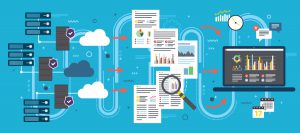Consumer expectations in ASEAN have highly increased due to digitization, now more than ever, as we are in the post-COVID world. The services industry has embraced technology across the world and also in ASEAN, and consumers expect the same from the manufacturing world, which Industry 4.0 will help them achieve.
Table of Contents
Why invest in Industry 4.0?
The global industry 4.0 is expected to grow from USD 64.9 billion in 2021 to USD 165.5 billion in 2026 with a CAGR of 20.6%.
According to McKinsey&Co., a digitally enabled factory can provide irresistible returns like,
● Machine downtime reduction by 30%-50%
● Throughput increase by 10%-30%
● Labor productivity improvement by 15%-30%
● Forecast prediction improvement by 85%
What does Industry 4.0 look like in ASEAN today?
The digital economy in ASEAN countries is expected to add USD 1 trillion to regional GDP in the next ten years. But there is a significant difference when we dive deeper into each of the countries in ASEAN.
According to the “Asia and the Global Economy” research, countries like Cambodia, Laos, and Myanmar are least ready for Industry 4.0 and need to work on their technological infrastructure and human capital.

“The degree of adoption is understandably lower in countries such as Myanmar and Cambodia when compared to some of the more industrialized neighbors due to the availability and readiness of workforce who are willing to work at lower wage points”
~ Sampath Kumar Venkattaswamy, Senior research manager, IDC Manufacturing Insights
Industry 4.0 seems uncertain in countries like Indonesia and the Philippines because they struggle to attract foreign investment. Thus, they need to strengthen their technological infrastructure and outward engagement.
Countries like Malaysia, Thailand, and Vietnam seem the most ready for Industry 4.0. But they need to implement these technologies faster to compete with higher -technology countries.
What are the upcoming Industry 4.0 market trends in ASEAN?
1. Digital Twin
The digital twin is a virtual representation of the physical object. It’s an interactive 3D model that can be used to simulate the behavior of the physical object in a digital environment. It uses simulation techniques and data from the actual world to replicate a physical system or object.
Digital twins have many use cases in different industries. They can be used for predictive maintenance, where the digital twin is used to predict when a machine will break down and make necessary changes before it does.
2. Hyper Automation
Hyper automation has been around for decades, but it has recently become more popular as technology continues to advance. The next level of automation focuses on automating more knowledge work beyond robotic process automation (RPA). Some leading manufacturing firms have already started using plant and machine automation, but more companies can start utilizing automation to reduce manual effort and increase physical throughput. According to ABIP’s 2021 ASEAN Innovation survey, leveraging business process automation across the business is a priority for 54.9% of ASEAN manufacturers.

3. Intelligent Data Platform
It is an integrated system that integrates all the data sources and databases into one platform. This platform can also be used to store the data offline as well as in real-time. It facilitates compliance management, integrates with external data sources, and provides business-critical insights while scalably managing data and integrating seamlessly across a variety of systems that are essential to the operation of the business.
4. Industrial Internet of Things
Industrial IoT is not just about connecting machines to the internet, it’s about connecting people as well. It’s about gathering information from the machines so people can make better decisions. It uses analytics and machine learning, cloud and edge computing, cyber-physical systems, and other technologies to provide commercial value.
5. Supply Chain 4.0
Supply chain 4.0 is a new paradigm in the supply chain management that integrates emerging technologies such as IoT, big data, and AI. It allows the supply chain to evolve in an agile way with the help of these emerging technologies. It reduces delivery times from days to hours and helps to achieve micro-segmentation and mass customization.
Conclusion
Since the technologies are new, it is evident that there might be either no policies in place or the regulations might be stringent currently, which might affect the adaptability of the technologies in Industry 4.0, especially in cross-border businesses due to security concerns. But Industry 4.0 has an enormous potential to grow and develop in ASEAN countries if certain things like upskilling human capital and foreign investments are taken care of.
About the Author:

With more than 22 years of IT experience in various leadership roles across the globe in multi-cultured environments in managing Global IT Sales, Delivery Management, Client Relationship Management and Sales, Establishing a business in new geographies, Large deals Program Management and Solution Designing, HR (Talent Acquisition and workforce operations), Transition and Bid Management. Yash also managed the IT deliveries, created a local partner ecosystem for effective resource mobilization, leveraging Global deliveries at various offshore locations, Managing the account and key client relationships, establishing and running nearshore development centres in Japan.















































